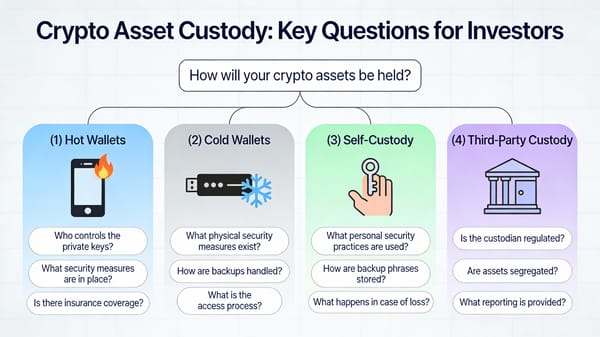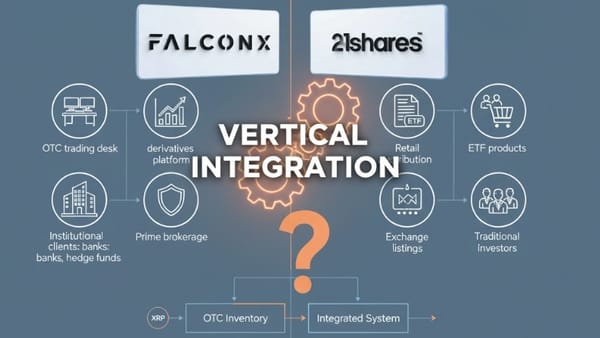The Complete Guide to Web3 Cryptocurrency Types: From Bitcoin to Tomorrow
Discover the complete Web3 ecosystem: From Bitcoin's digital gold standard to innovative projects like HBAR's enterprise-grade performance, FLR's data connectivity, and ZBCN's streaming finance revolution

The Web3 ecosystem has evolved far beyond Bitcoin's original vision of peer-to-peer digital cash. Today's blockchain landscape encompasses diverse projects solving real-world problems across finance, supply chains, gaming, and infrastructure. Understanding the main cryptocurrency categories helps investors and users navigate this complex but exciting space.
Layer 1 Blockchains: The Foundation of Web3
Layer 1 blockchains are the base protocols that power the entire cryptocurrency ecosystem. These networks handle transactions, execute smart contracts, and maintain security without relying on other blockchains.
Bitcoin (BTC): Digital Gold
Bitcoin remains the king of cryptocurrencies as the most secure and widely adopted digital asset. With its proof-of-work consensus and fixed supply of 21 million coins, Bitcoin serves as "digital gold" and a hedge against inflation. The network processes about 7 transactions per second, prioritizing security over speed.
Future Considerations: Bitcoin's role as a store of value continues strengthening as institutions adopt it. Layer 2 solutions like the Lightning Network are improving scalability for everyday payments, while innovations like Bitcoin Ordinals enable NFTs directly on the Bitcoin blockchain.
Ethereum (ETH): The Smart Contract Pioneer
Ethereum introduced programmable money through smart contracts, enabling the creation of decentralized applications (dApps), DeFi protocols, and NFTs. Processing around 15 transactions per second, Ethereum hosts the largest ecosystem of Web3 applications with over $61 billion in total value locked (TVL).
Future Considerations: Ethereum's transition to proof-of-stake has improved energy efficiency by 99%. Upcoming upgrades like Pectra, which launched in May 2025, continue enhancing scalability and developer experience. Ethereum remains the go-to platform for DeFi innovation and institutional blockchain adoption.
Solana (SOL): High-Performance Blockchain
Solana combines proof-of-history (PoH) with proof-of-stake to achieve up to 65,000 transactions per second at low costs. With $8.3 billion in TVL, Solana hosts thriving DeFi, NFT, and gaming ecosystems, plus popular meme coins and social applications.
Future Considerations: Solana's speed advantage positions it well for high-frequency applications like gaming and real-time payments. The network's growing developer ecosystem and institutional partnerships suggest continued expansion in consumer-facing Web3 applications.
Layer 2 Solutions: Scaling the Base Layer
Layer 2 networks build on top of Layer 1 blockchains to improve transaction speed and reduce costs while maintaining the security of the underlying blockchain.
Arbitrum (ARB): Ethereum's Speed Booster
Arbitrum uses optimistic rollups to process up to 4,000 transactions per second while reducing Ethereum gas fees by up to 95%. It commands over 51% market share among Ethereum Layer 2 networks by TVL.
Future Considerations: As Ethereum adoption grows, Layer 2 solutions like Arbitrum become essential infrastructure. The network's developer-friendly environment and growing DeFi ecosystem position it as a key component of Ethereum's scaling roadmap.
Polygon (MATIC): Multi-Chain Connector
Polygon provides Ethereum scaling through sidechains and Layer 2 solutions, hosting over $845 million in TVL. It supports major DeFi protocols and NFT marketplaces while offering seamless connectivity with multiple blockchain networks.
Future Considerations: Polygon's focus on enterprise adoption and government partnerships positions it for real-world blockchain implementation. Its multi-chain approach addresses the need for blockchain interoperability in an increasingly fragmented ecosystem.
Cross-Border Payments: Revolutionizing Money Movement
Several cryptocurrencies focus specifically on improving international payments and remittances.
XRP: Banking Bridge Currency
XRP serves as a bridge currency for financial institutions, enabling fast and low-cost cross-border payments. Processing 1,500 transactions per second with fees around $0.0002, XRP has partnerships with over 100 banks and payment providers globally, including Santander and American Express.
XRP Analysis:
- Price Potential: Recent legal clarity has boosted XRP's prospects, with the token surging above $2.30 in March 2025
- Business Operations: Ripple's expanding partnerships with central banks for CBDC pilots strengthen its institutional foothold
- Legal Standing: The resolution of Ripple's SEC case has removed regulatory uncertainty
- Partnership Opportunities: Growing integration with traditional financial systems creates new use cases
- Adoption Prospects: XRP's efficiency makes it attractive for the $3.5 trillion global payments market
Future Considerations: XRP's focus on regulatory compliance and bank partnerships positions it to capture significant market share as traditional finance embraces blockchain technology for cross-border payments.
Enterprise Infrastructure: Next-Generation Networks
Advanced blockchain networks are targeting enterprise adoption with superior technology and governance models.
Hedera Hashgraph (HBAR): Enterprise-Grade Performance
HBAR utilizes hashgraph consensus to achieve 10,000+ transactions per second with fees of just $0.001. Governed by a council including Google, IBM, and Boeing, Hedera provides enterprise-grade security and performance for mission-critical applications.
HBAR Analysis:
- Price Potential: Trading near five-month highs with bullish momentum toward $0.32 resistance
- Business Operations: Strong enterprise partnerships and $129 million TVL demonstrate growing adoption
- Technology Edge: Hashgraph consensus offers advantages over traditional blockchain architecture
- Partnership Opportunities: Council governance with major corporations provides strategic advantages
- Adoption Prospects: Focus on compliance and enterprise needs positions HBAR for institutional adoption
Future Considerations: Hedera's unique consensus mechanism and enterprise partnerships make it attractive for businesses requiring high throughput and regulatory compliance. The potential for HBAR ETF approval in 2025 could boost institutional adoption.
Data and Interoperability: Connecting Blockchain Islands
Projects focusing on data feeds and cross-chain connectivity solve critical infrastructure challenges.
Flare (FLR): Blockchain Data Bridge
Flare enables smart contracts to securely access data from other blockchains and real-world sources through its Flare Time Series Oracle (FTSO) and State Connector protocols. Trading at around $0.024, FLR powers the first blockchain designed for data interoperability.
FLR Analysis:
- Price Potential: Recent 57% surge signals growing interest, with analysts targeting $0.099 by end of 2025
- Business Operations: FAssets launch enables real XRP use in DeFi, expanding utility
- Technology Innovation: Unique data oracle system addresses critical Web3 infrastructure needs
- Partnership Growth: Expanding ecosystem includes traditional finance and Web3 integrations
- Adoption Prospects: As Web3 matures, demand for reliable cross-chain data will increase
Future Considerations: Flare's role as Web3's data layer becomes more critical as blockchain applications require real-world information. The network's ability to connect isolated blockchains positions it as essential infrastructure for the multi-chain future.
Real-Time Finance: Streaming Money
Innovation in financial infrastructure enables new models of money movement and payments.
Zebec Network (ZBCN): Programmable Finance
ZBCN powers real-time streaming payments, allowing salaries to be paid per second rather than weekly or monthly. Built on Solana and expanding across multiple chains, Zebec serves over 50,000 monthly active users with services including payroll, treasury management, and crypto payment cards.
ZBCN Analysis:
- Price Potential: Currently trading at $0.004274 with growth projections to $0.008 by 2025
- Business Operations: Processing over $52 million in card transactions and $41 million in payroll monthly
- Innovation Edge: First platform enabling real-time salary streaming addresses $3.5 trillion payroll market
- Partnership Expansion: Recent integrations with 15 blockchains and compliance partnerships
- Adoption Prospects: Mainstream adoption through Visa/Mastercard integration and enterprise payroll solutions
Future Considerations: Zebec's streaming finance model represents a fundamental shift in how money moves. As remote work and gig economy grow, demand for flexible payment solutions positions ZBCN for significant expansion.
DeFi Protocols: Decentralized Finance Infrastructure
Decentralized Finance has revolutionized traditional financial services through blockchain technology.
Major DeFi Categories:
- Lending Protocols: Aave, Compound enable users to lend and borrow cryptocurrencies
- Decentralized Exchanges: Uniswap, SushiSwap facilitate token trading without intermediaries
- Yield Farming: Protocols offering rewards for providing liquidity
- Synthetic Assets: Mirror real-world assets on blockchain
Future Considerations: DeFi TVL is projected to exceed $200 billion by year-end 2025, driven by tokenized securities and institutional adoption. The sector continues innovating with AI integration and cross-chain protocols.
NFTs and Digital Ownership
Non-Fungible Tokens represent unique digital assets, from art to gaming items and real-world asset tokenization.
NFT Market Recovery:
Trading volumes are expected to reach $30 billion in 2025 as wealthy users diversify into NFTs viewed as assets with cultural and historical significance.
Future Considerations: NFTs are evolving beyond digital art into utility tokens for gaming, metaverse assets, and real-world asset representation. Integration with AI and improved user experiences drive mainstream adoption.
Gaming and Metaverse
Blockchain gaming combines entertainment with economic incentives through play-to-earn models.
Key Trends:
- Play-to-Earn Games: Players earn cryptocurrency through gameplay
- Virtual Real Estate: Metaverse land ownership and development
- Gaming NFTs: In-game items as tradeable assets
Future Considerations: Gaming represents Web3's path to mass adoption, with improved user experiences and mainstream game studio integration expected to drive billion-user adoption.
Market Outlook and Investment Considerations
The cryptocurrency market continues evolving with increasing institutional adoption and regulatory clarity. Key trends for 2025 include:
Bullish Factors:
- Bitcoin strategic reserve adoption by governments
- Ethereum's continued DeFi dominance
- Layer 2 scaling solution maturation
- Cross-chain interoperability improvements
- Real-world asset tokenization growth
Risk Considerations:
- Regulatory uncertainty in some jurisdictions
- High volatility across all categories
- Technology risks and smart contract vulnerabilities
- Market manipulation and speculative bubbles
Conclusion
The Web3 ecosystem offers diverse opportunities across multiple cryptocurrency categories. From Bitcoin's store of value proposition to innovative projects like HBAR's enterprise focus, FLR's data connectivity, and ZBCN's streaming finance, each serves distinct market needs.
Success in this space requires understanding how different projects address real-world problems. As blockchain technology matures, projects with strong utility, partnerships, and clear value propositions are positioning themselves for long-term success in the evolving digital economy.
Key Takeaway: The future of Web3 isn't about one blockchain winning everything—it's about an interconnected ecosystem where specialized networks like XRP for payments, HBAR for enterprises, FLR for data, and ZBCN for streaming finance work together to create a more efficient and accessible financial system.
DISCLAIMER: This newsletter is for informational purposes only and does not constitute investment advice or a recommendation to buy, sell, or hold any securities. Investments in cryptocurrencies or other financial assets carry significant risks, including the potential for total loss, extreme volatility, and regulatory uncertainty. Past performance is not indicative of future results. Always consult a qualified financial professional and conduct thorough research before making any investment decisions.
Sources
- 101 Blockchains - "List of Top Web3 Projects to Watch in 2025"
- HeLa Labs - "Top 10+ Web3 Crypto Projects to Consider in 2025"
- FXStreet - "Top Crypto Gainers: Hedera, Flare, Ripple"
- SoSoValue - "HBAR vs XRP in 2025: Detailed Comparison"
- CoinMarketCap - Flare Network and Zebec Network
- Medium - "Flare Network: The Unsung Architect of Web3's Data Layer"
- CoinDCX - "Top Web3 Tokens to Watch in July 2025"
- KuCoin Learn - "Top 15 Layer-1 (L1) Crypto Projects to Watch in 2025"
- Crypto.com Research - "Bitcoin's Expanding Ecosystem: Layer-2, DeFi, NFT"
- Funds Society - "The Top 10 Cryptocurrency Predictions for 2025"



